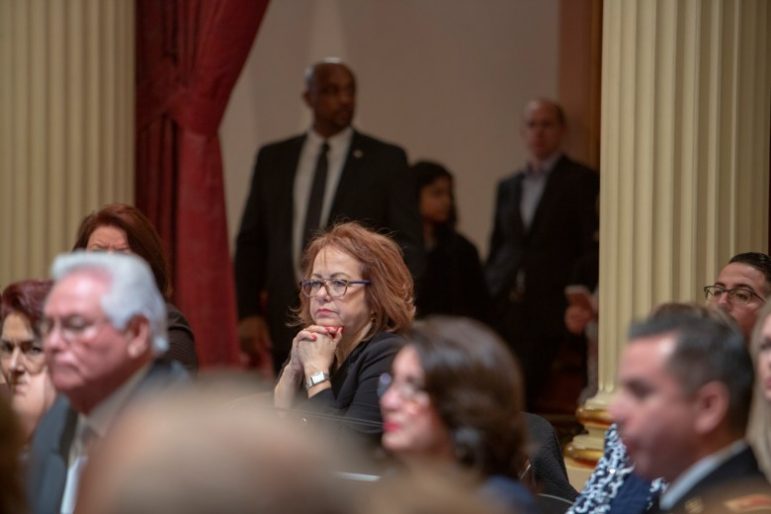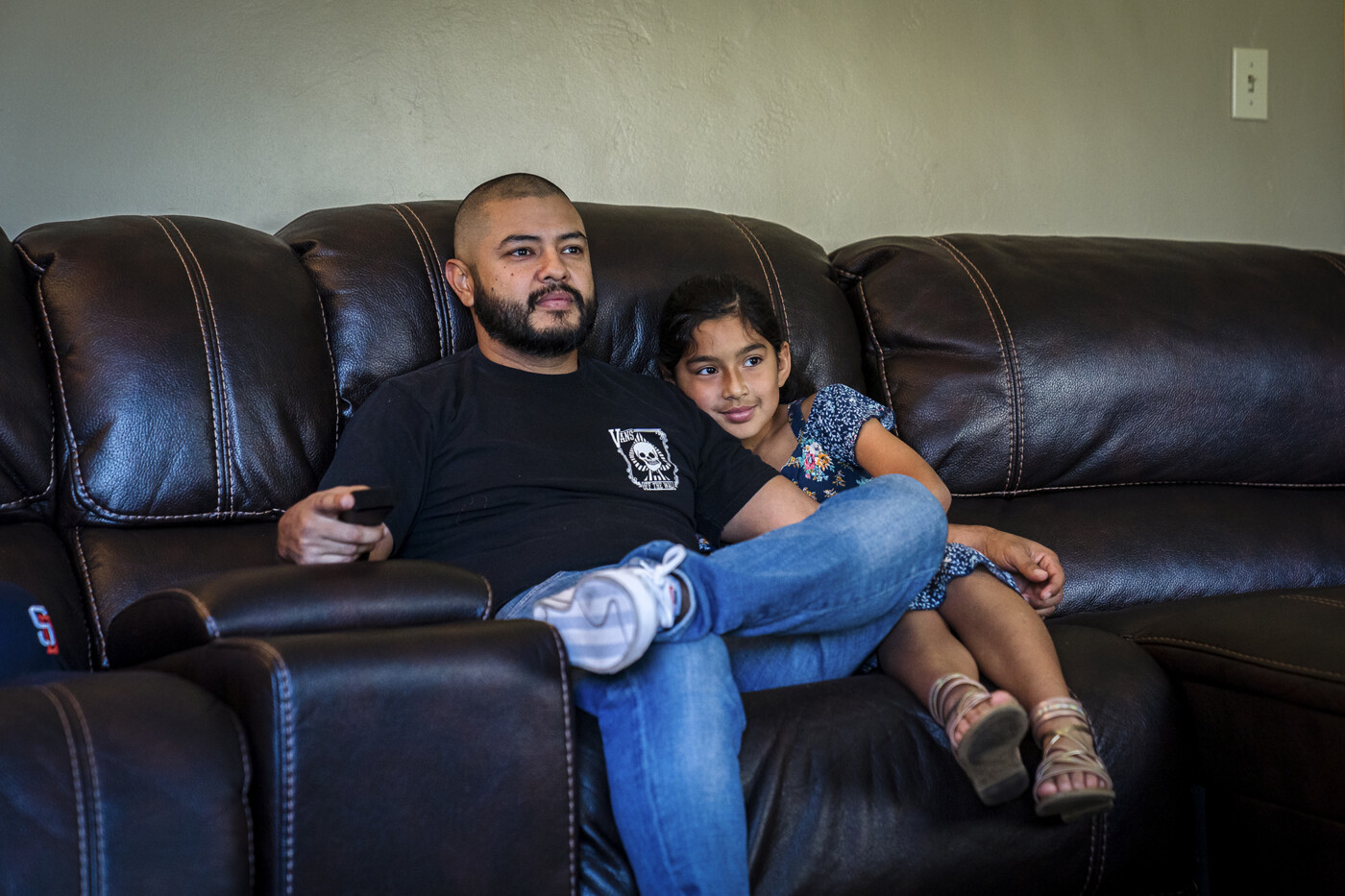María Elena Durazo, a Democratic senator from Los Angeles, is renewing the fight for equitable paid family leave, hoping to make it a realistic option for more low-income Californians.
After Gov. Gavin Newsom vetoed a similar bill last fall that would have increased wage replacement pay for the lowest paid workers, Durazo introduced Senate Bill 951 in February which would phase in increases in the percentage of the earnings low-wage workers receive while out on family leave, so three years from now a worker would receive up to 90% of their pay.
This week her bill passed out of committee with a three-quarters majority after a hearing. It was one of three bills she presented designed to bolster protections for low-income workers; the trio of measures is headed to the appropriations committee.
California became the first state in the nation to implement paid family leave in 2002.
Nearly every private sector worker pays a 1.1% tax from each paycheck, which goes toward State Disability Insurance, which pays for paid family leave and disability insurance.
Although everybody pays in, not everybody uses it.
A recent analysis from the California Budget & Policy Center shows the program is still a far reach for most low-income workers. Data from 2020 reveal that California’s workers who earned $20,000 or less a year made up 37% of all workers eligible for paid family leave — the largest share — but they had the lowest family leave utilization rates at 14%. In fact, between 2017 and 2019, the number of claims filed by these workers steadily declined while claims from workers in every other income bracket increased, according to data from the Employment Development Department.

“This means that low- wage workers are subsidizing the leave of higher-wage workers,” Durazo said at the bill’s hearing this week.
Under California’s minimum wage law, workers at small businesses earn $14 an hour, or roughly $27,000 annually. Each week, they pay $6.16 towards the state’s paid family leave program. Their pre-tax salary is $540 a week, which means that the weekly family leave benefit of 70% amounts to around $378, an amount that Durazo says is far too little to live on.
“In recent years, we have significantly expanded job protections for workers out on family and medical leave. We have made little progress in addressing lost income,” she said.
For Jerry Sandoval, a San Diego father who testified at this week’s hearing, paid family leave was not an affordable option when his daughter was born in 2014.
Between two jobs — and a $33,000 annual salary — Sandoval could only manage to take two weeks off to spend with his newborn.
“I had been waiting to be a parent for a long time, so I was devastated when I had to go back to work,” Sandoval said. Now she is 7, but he says he can’t imagine how he would have survived her being an infant during the pandemic. “I can’t even sit here and think about that; it’s crazy.”
Today California still lags behind such blue states such as Washington and Connecticut, which recently implemented programs that provide low-wage workers with 90% and 95% wage placement respectively.
If Durazo’s bill passes, by 2025 it would boost wage replacement rates up to 90% for workers receiving eight weeks of paid family leave and for workers receiving the first 16 weeks of disability insurance — if those workers make 70% or less of the state’s average wage, or about $46,000 a year. Workers making more than $46,000 would receive 70% wage replacement.
When Newsom vetoed AB 123, a similar bill by former Sen. Lorena Gonzalez last year, he said increased wage replacements would saddle employees with “significant new costs.”
Durazo’s bill presents a new solution that she says would fund family leave more equitably.
By removing the taxable wage ceiling, the highest amount of wages that are subject to the State Disability tax, higher-income individuals who make more than $145,000 would continue contributing 1.1% of their wages to the SDI fund.
Durazo said this change would not impact the 91% of workers who make less than $145,000 annually.
She added that while she fiercely supported AB 123, she understood the governor’s concerns about funding.
“I think there’s a valid argument to be made: how do we pay for increased benefits? Not a penny comes out of our general fund, so this was a matter of making it fair across the board,” she said. “Why should those with higher incomes stop paying at the same rates as lower incomes — when they can probably afford to take time off anyway?”
Kristin Schumacher, a policy analyst at the California Budget & Policy Center and author of the analysis, said the gap in utilization among low-income earners has been exacerbated by the pandemic.
“It’s critically important that workers are able to take time off to care for their family members and that shouldn’t be a privilege restricted to those with economic privilege,” Schumacher says. “Workers who have been contributing ever since they got their first part-time job when they were teenagers deserve to be able to use those benefits when the need arises. For those who can’t afford to pay bills or buy food on a fraction of their wages, they just can’t do it. And that’s unfair.”
Proponents of the bill include a broad coalition of organizations advocating for working families. Arissa Palmer, executive director of the nonprofit BreastfeedLA, said SB 951 would not only provide economic relief for working families but it also would have a positive impact on infant and maternal health.
“All studies show that chest/breastfeeding families who have access to paid family leave have stronger employee morale. They’re more likely to return to work and less likely to call out sick,” she said. “There are health benefits to both parent and child with that time to breast/chestfeed, including decreasing risk of chronic diseases, diabetes, certain cancers and allergies.”
The only group that spoke against the bill this week was the California Alliance for Retired Americans, which raised concerns that increasing wage replacement rates for both family leave and disability insurance would result in fewer disability benefits for retired recipients down the line. Tom Rankin, the group’s vice president, said the bill, unless amended, could reduce wage replacement rates for disability insurance to 60% after the first 16 weeks, harming ill and injured workers.
Durazo predicted that SB 951 would ultimately help retirees, who are supported through the state’s Social Security network.
“If they have family members that could spend more time taking care of them if they’re ill, then this would help the family member be able to take that leave and get more of their wages replaced,” she says.
In the hearing, Durazo also introduced SB 1058 which would require the EDD to collect data on the race and ethnicity of recipients of paid family leave and disability insurance. There also are plans for two new bills to be introduced later this session to add gender as a data point in need of collection.
The EDD has received the highest numbers of claims for paid family leave filed since 2011 over the past two years, but policymakers and advocates say they aren’t sure which demographic groups are taking advantage of the program without that data.
“How can we move forward and have the best possible program solutions without that information?” Durazo asks.
Meanwhile current wage replacement rates are set to expire at the end of the year. There is a new sense of urgency to pass legislation before 2023 or else the rates will slip back down to 55% — which would mean even greater financial hardship for California’s working class.
But Durazo said she feels hopeful that SB 951 has a viable second chance at bolstering the state’s family leave program – and that removing the taxable wage ceiling will offer a sustainable funding structure for the program for years to come.
“I think there’s been a new consciousness around issues of equity – especially among low-wage workers and women workers. I’m hopeful that the governor sees this as a fair resolution to how the program gets paid for and allows more people who don’t take advantage to be able to use the program,” Durazo says. “This is an important step in that direction.”
The governor’s office declined to comment on the bill.
This article is part of the California Divide project, a collaboration among newsrooms examining income inequality and economic survival in California.
